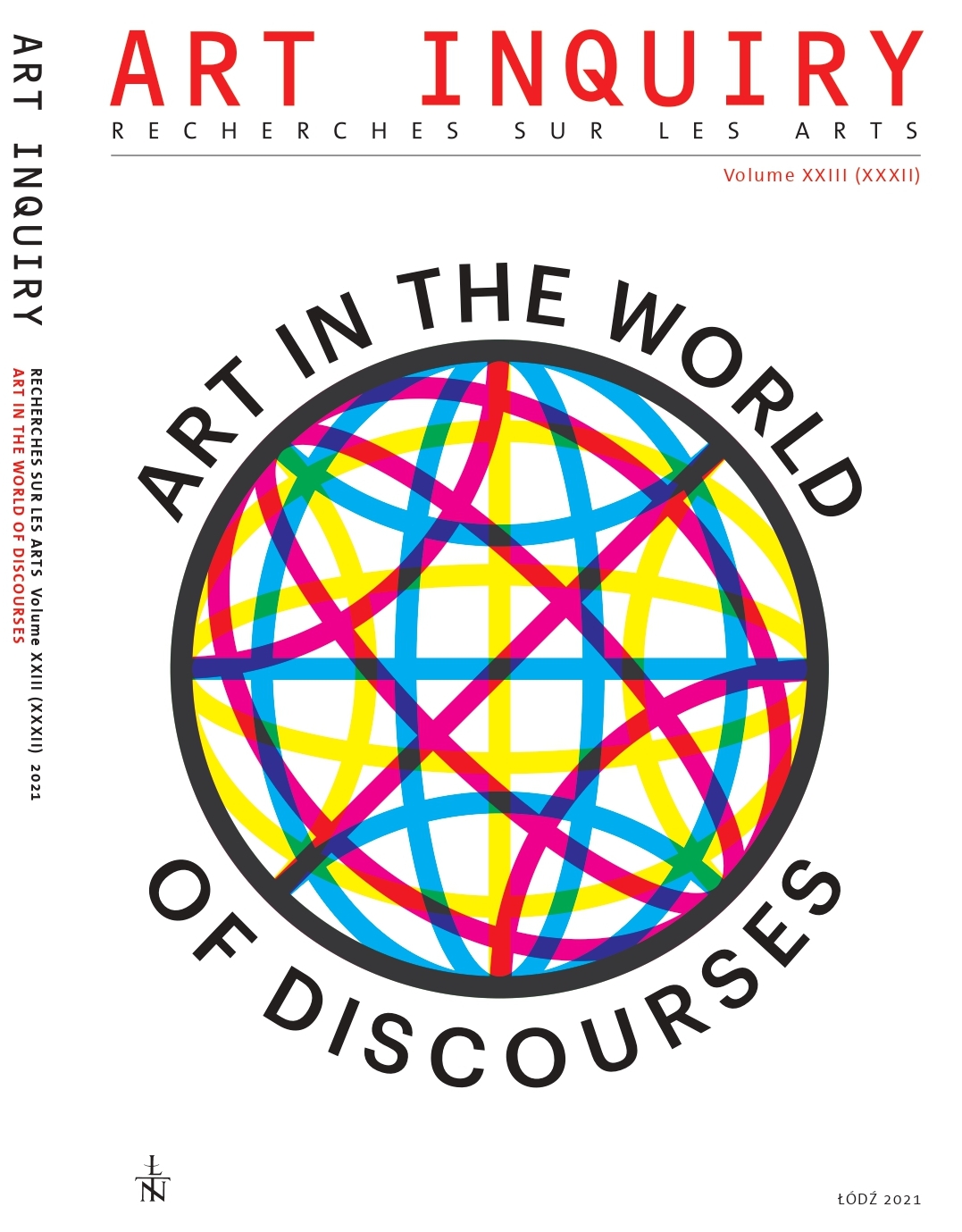The Work of Art as a Collection. Violence, death and loss in the art of Luz María Sánchez
DOI:
https://doi.org/10.26485/AI/2021/23/15Keywords:
Luz María Sánchez, transdisciplinarity, work/collection, artistic research, multiformity, memory, artistic database, artivismAbstract
In this article, I discuss the art of Luz María Sánchez, proposing to approach it through the conceptual category of what I term a collection or multiform artwork. I characterize the central themes of her work – violence, death and loss – and highlight the most important characteristics of her artworks, which include multiformity, fluidity, transgressiveness, transdisciplinarity, participativeness and interactivity. I likewise focus on her art’s status as artistic research and its structural and material grounding in databases and collections, as well as on its use in the context of the visual arts of sound, ethnographic research, cybercartography, subversivity and found objects. I explain how Sánchez’s art is research-interventionist in nature: she analyses social events, processes and various forms of power, focusing in particular on different forms of violence. Her works emerge from research-analytical activities based on the materials she collects and the databases she builds, which serve as the foundation for the resulting artworks. Sánchez’s political interests are an expression of indignation and concern at the same time; they express both an activist stance and ethical commitment. In her art, she addresses the fate of Mexican society which has been abandoned by state authorities and left to the mercy of drug cartels and gangs. At the same time, she develops her own personal discourse in the works she creates, discreetly telling her own story which is intertwined with the history of contemporary Mexico. Her works/collections depict a landscape after a catastrophe, expressing a sense of hopelessness and loss. At the same time, however, they paradoxically initiate or promote actions and tactics of resistance
References
Agresta, Michael (2015) Narco Violence, as Seen by a Journalist-Turned-Artist, “Texas Observer”, Nov 5, https://www.texasobserver.org/narco-violence-as-seen-by-a-journalist-turned-artist/
Block, René (2013) On Attempts to Democratise the Art Market, “Publisher’s Notebook”, no. 10.
Cassilas, Dolores Inés (2011) Listening to the Border: “2487: Giving Voice in Diaspora” and the Sound Art of Luz María Sánchez, “Sounding Out”, July 4, https://soundstudiesblog.com/2011/07/04/listening-to-the-border-2487-giving-voice-in-diaspora-and-the-sound-art-of-luz-maria-sanchez/
Kluszczyński, Ryszard W. (2021) Dzieło sztuki w erze sieciowej prezentacji (The Work of Art in the Age of Networked Presentation), “Czas Kultury”, no. 3.
Kluszczyński, Ryszard W. (2017) Towards Expanded Reality. Introduction to Considerations on the Work of Masaki Fujihata, [in:] Widening the World. Masaki Fujihata and the art of hybrid space-time, ed. Ryszard W. Kluszczyński, Łaźnia Centre for Contemporary Art, Gdańsk, pp. 6-19.
Manovich, Lev (2001) The Language of New Media, The MIT Press, Cambridge Mass.
Sánchez, Luz María, detritus 1 & 2 and V.F(i)n_1&2: The Sounds and Images of Postnational Violence in Mexico, https://soundstudiesblog.com/2015/04/13/detritus/
Sánchez, Luz María (2016) Vis.[un]necessary force, [in:] Archiving and Questioning Immateriality. Proceedings of the 5th Computer Art Congress, ed. Everardo Reyes-Garcia, et al., Europia Productions, Paris, pp. 240-259.
Shusterman, Richard (2000) The End of Aesthetic Experience, [in:] Idem, Performing Life. Aesthetic Alternatives for the Ends of Art, Cornell University Press, Ithaca, pp. 15-34.
http://detritus.mx/visualizacion.html



